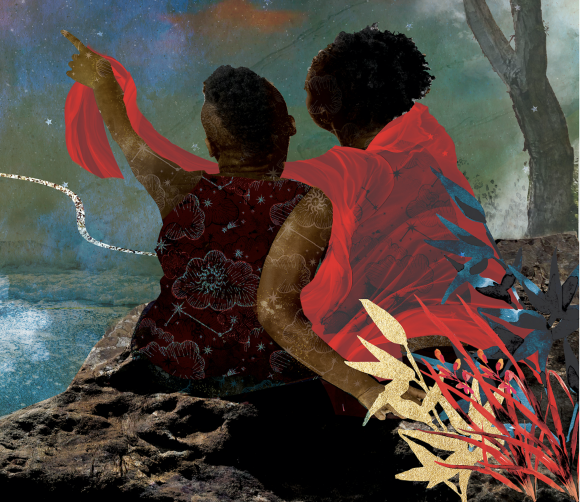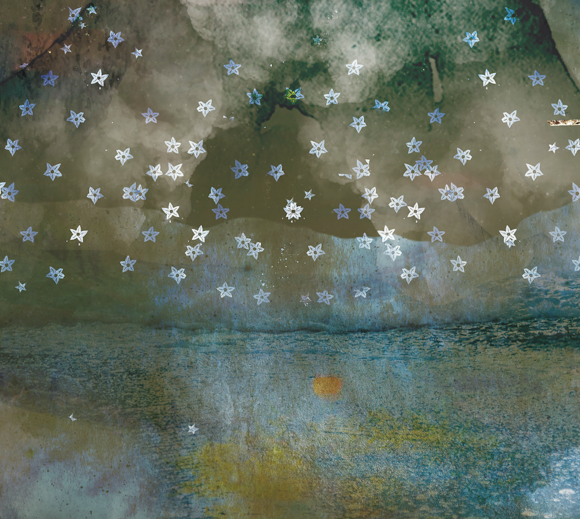Carla Jay Harris Creating Space to Reimagine
March 10, 2021
In honor of Woman’s History Month, we are highlighting some of the work acquired by the Escalette Collection of Art this year as part of the Engaging the World: Leading the Conversation on the Significance of Race Initiative.
Carla Jay Harris is a multidisciplinary artist whose practice includes photography, installation, collage, and drawing. Harris’s work has been exhibited nationally and internationally at the California African American Museum, CA; the Los Angeles Municipal Art Gallery, CA; the Southern, Charleston, SC; Smack Mellon, Brooklyn, NY; and the Museum of Fine Arts Sherbrooke, Quebec, Canada. She has been the beneficiary of several grants and fellowships, including the Hoyt Scholarship, Resnick Fellowship, and a grant from the Pasadena Art Alliance. Harris completed undergraduate coursework at the School of Visual Arts in New York, received her Bachelor’s degree with distinction from the University of Virginia, and her MFA from UCLA in 2015. She lives and works in Los Angeles, CA.

Carla Jay Harris, Ways of Gods, hand embellished archival digital print, 2020. Purchased with funds from the Ellingson Family.
Carla Jay Harris’ most recent body of work entitled Celesital Bodies was inspired by her experience growing up as a “third culture kid.” As the child of a military officer, Harris spent most of her childhood living outside the United States, primarily in Germany and Italy. Othered on account of race, language, culture and nationality, Harris’ “surreal” childhood made her aware of the fundamental impact that physical and physiological environments have on one’s sense of belonging. Living in places that emphasized difference, Harris naturally gravitated towards mythology because of the way it highlighted humanity’s shared fears, desires, and need for understanding.
“Throughout history, mythology has served humankind’s need to understand its surroundings, nature and society. Through myth-making I have been able to tap into a sense of belonging that extends from a connection to universal cultural concerns and narratives.”
Using a combination of photography, drawing, and collage, Harris creates fantastic spaces that bridge the gap between myth and reality. Her multidisciplinary approach brings different elements into a sense of belonging with one another. Harris describes how her creative process always starts with a long period of research and writing. She studies interviews, local history, and family archives to develop the real, lived aspect of her works. After spending time journaling, brainstorming, and sketching, Harris uses her camera to take photographs of the foundational elements of the work. These images are scanned into her computer and combined with digital collage and hand-drawn illustrations. The final result is a harmony of media that naturally work with one another without loosing their unique qualities.
The photographic elements of Harris’ work, such as the rock in the forefront, the figures’ heads, and the yellow moon in Ways of Gods, capture a single moment in time and space, preserving it forever. These fixed photographic details, though, are not allowed to remain stagnant markers. Instead, they are thrust into environments alive with timeless pattern, movement, and texture. This dramatic collision of media creates an alternate space that both exists within and outside of time, a space that allows for the reimagining of possibilities.
“It is my hope that works such as these lead to the reimagining of society as more inclusive whole – a society grounded in belonging.”
—
We invite you to explore all the works in the Escalette Collection by visiting our eMuseum.
Wilkinson College of Arts, Humanities, and Social Sciences is the proud home of the Phyllis and Ross Escalette Permanent Collection of Art. The Escalette Collection exists to inspire critical thinking, foster interdisciplinary discovery, and strengthen bonds with the community. Beyond its role in curating art in public spaces, the Escalette is a learning laboratory that offers diverse opportunities for student and engagement and research, and involvement with the wider community. The collection is free and open to the public to view.




